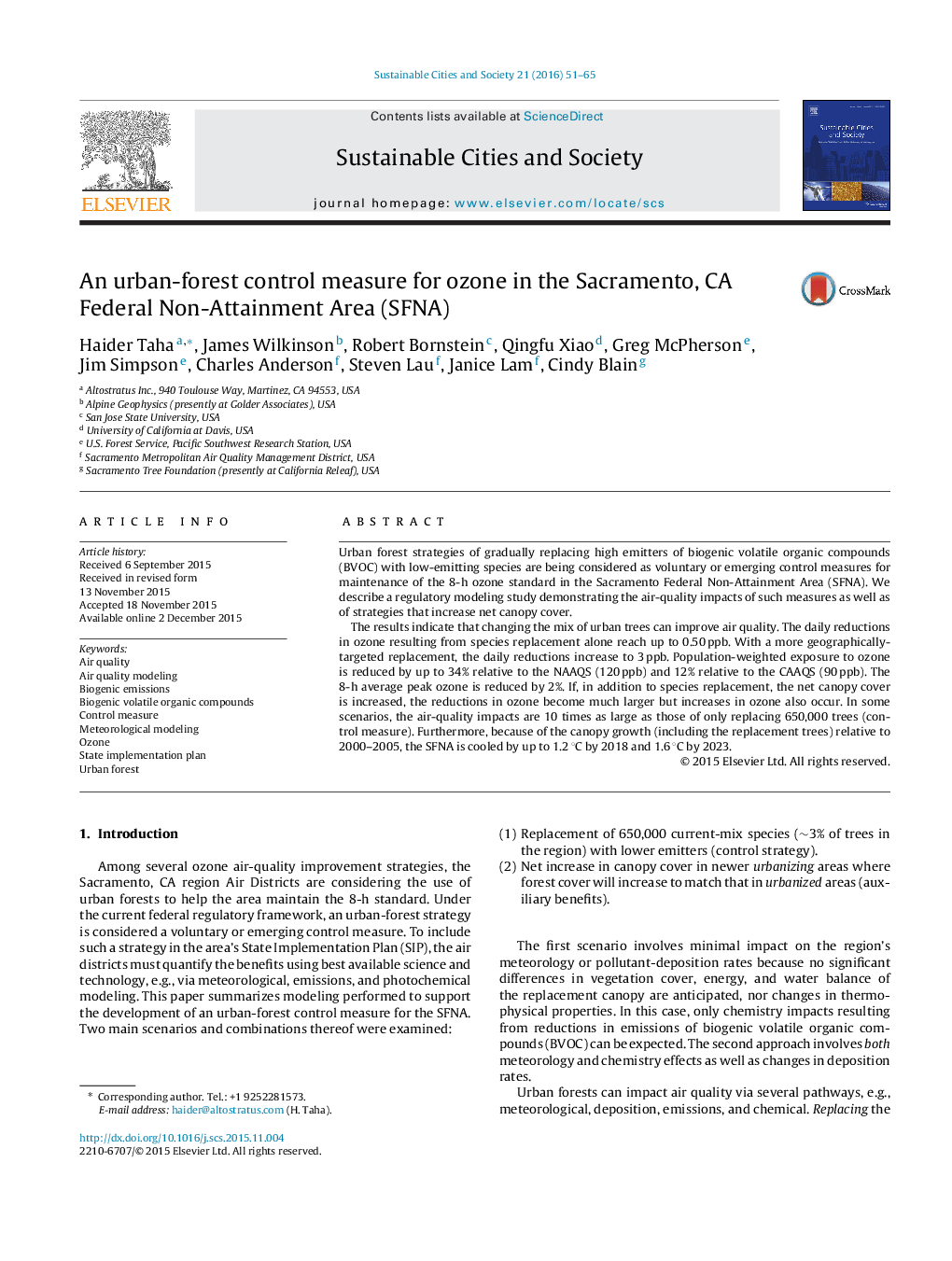| کد مقاله | کد نشریه | سال انتشار | مقاله انگلیسی | نسخه تمام متن |
|---|---|---|---|---|
| 308079 | 513521 | 2016 | 15 صفحه PDF | دانلود رایگان |
Urban forest strategies of gradually replacing high emitters of biogenic volatile organic compounds (BVOC) with low-emitting species are being considered as voluntary or emerging control measures for maintenance of the 8-h ozone standard in the Sacramento Federal Non-Attainment Area (SFNA). We describe a regulatory modeling study demonstrating the air-quality impacts of such measures as well as of strategies that increase net canopy cover.The results indicate that changing the mix of urban trees can improve air quality. The daily reductions in ozone resulting from species replacement alone reach up to 0.50 ppb. With a more geographically-targeted replacement, the daily reductions increase to 3 ppb. Population-weighted exposure to ozone is reduced by up to 34% relative to the NAAQS (120 ppb) and 12% relative to the CAAQS (90 ppb). The 8-h average peak ozone is reduced by 2%. If, in addition to species replacement, the net canopy cover is increased, the reductions in ozone become much larger but increases in ozone also occur. In some scenarios, the air-quality impacts are 10 times as large as those of only replacing 650,000 trees (control measure). Furthermore, because of the canopy growth (including the replacement trees) relative to 2000–2005, the SFNA is cooled by up to 1.2 °C by 2018 and 1.6 °C by 2023.
Journal: Sustainable Cities and Society - Volume 21, February 2016, Pages 51–65
